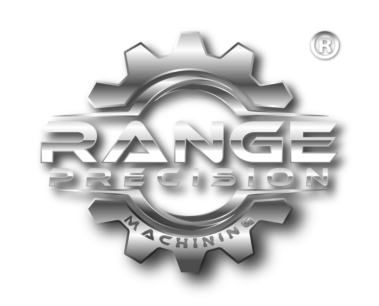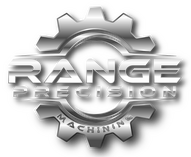At Range Precision Machining, anodizing is more than just a surface treatment. It’s a critical process that adds durability, corrosion resistance, and aesthetic appeal to metal parts. This finishing method, specially tailored for CNC-manufactured components, plays a pivotal role in enhancing their high-performance anodizing solutions for metal parts. From aerospace and electronics to precision engineering, anodizing is a vital process for industries demanding durability and high precision.
The Basics of Anodizing for Machining Applications
Anodizing is an electrochemical process that thickens the oxide layer on metal parts, typically aluminum. This protective layer offers enhanced wear resistance, improved lubrication retention, and increased corrosion resistance—key factors in environments where CNC machining is used. In addition, anodizing allows for aesthetic customizations, giving customers more flexibility in design without compromising on performance. For machining shops like Range Precision, this versatility is indispensable for meeting the diverse needs of their clients.
Why Anodizing Matters for CNC Machining
In the world of CNC machining, components must endure stress, moisture, and abrasion. Anodized aluminum excels under these conditions, extending the lifespan of parts compared to untreated metals. There are different types of anodizing treatments, such as type II (sulfuric acid-based) for moderate protection and aesthetics, and type III (hardcoat anodizing), which provides extreme hardness and resistance. Type III is especially essential in industries such as aerospace and heavy-duty manufacturing, where durability and resistance to wear are critical.
Flexibility in Aesthetics: Color and Beyond
Anodizing isn’t just a protective method; it opens up creative possibilities with color flexibility. The porous nature of anodized aluminum allows for the infusion of dyes, enabling the creation of parts with custom finishes. This is particularly valuable for industries like consumer electronics, where branding and appearance are critical. Custom-colored anodized parts provide a unique visual appeal, allowing businesses to differentiate their products while maintaining the structural integrity of the metal.
Surface Performance and Porosity
A significant benefit of anodizing is the creation of a porous layer, ideal for paint adhesion or bonding adhesives. This feature enhances performance in sectors such as architecture and automotive, where components often require additional coatings or treatments. For example, anodized automotive parts not only benefit from added protection but can also be customized with specialty paints, extending their lifespan and improving their aesthetic value.
Integration with Modern Trends in CNC Machining
One of the most exciting advancements in anodizing is its integration with automation and digital twins. Automated anodizing lines are reducing production times and ensuring uniform finishes, while digital twins allow for virtual testing of anodizing processes before production, minimizing errors and material waste. These innovations help CNC machining shops, like Range Precision, streamline their operations, improve consistency, and meet tighter customer deadlines.
Furthermore, the focus on sustainability has impacted the anodizing process. Many machining shops are adopting eco-friendly anodizing methods, such as closed-loop systems, which recycle process water and reduce chemical waste. This approach aligns with the broader trend of sustainability in manufacturing, allowing companies like Range Precision to minimize their environmental impact in High-performance anodizing solutions for metal parts.
Optimizing Results in a Machining Shop
Preparation is key to leveraging anodizing effectively in machining. Before anodizing, CNC-machined parts must be thoroughly cleaned and deburred to prevent any impurities from affecting the final finish. Post-anodizing, sealing treatments are applied to enhance corrosion resistance, making the parts robust enough for sectors like electronics, optics, and medical device manufacturing, where precision and durability are paramount.
Anodizing as a Sustainable Process
As sustainability becomes an increasing concern for machining shops, anodizing offers a solution with its eco-friendly nature. The process produces no hazardous by-products, and the anodized layer is integrated into the metal surface, ensuring it doesn’t peel or chip like paint. Additionally, aluminum remains fully recyclable even after anodizing, making this process an ideal choice for shops committed to environmental responsibility.
Strengthening Industry-Specific Solutions
Anodizing caters to the specific demands of industries requiring high-performance parts. Type II anodizing provides corrosion resistance and maintains tight tolerances, ideal for applications requiring both form and function. Type III anodizing, with its superior wear resistance, is essential for aerospace and heavy industrial applications. Whether it’s in the automotive or architectural sectors, anodized aluminum delivers both durability and a surface ready for further customization.
The Path Ahead: Combining Precision and Surface Treatment
Anodizing continues to be a fundamental finishing technique for machined parts, striking an effective balance between aesthetics and functionality. Recent advancements, including automated processes, are further optimizing anodizing operations. These improvements enhance efficiency, minimize downtime, and ensure consistency, enabling machining shops to meet customer deadlines while maintaining high-quality standards.
At Range Precision Machining, the combination of advanced CNC machining and anodizing ensures that every part produced exceeds customer expectations from durability to aesthetic finish for High-performance anodizing solutions for metal parts. Whether it’s about pushing the boundaries of color customization or enhancing surface hardness, anodizing continues to be a crucial component in delivering precision-engineered solutions.








